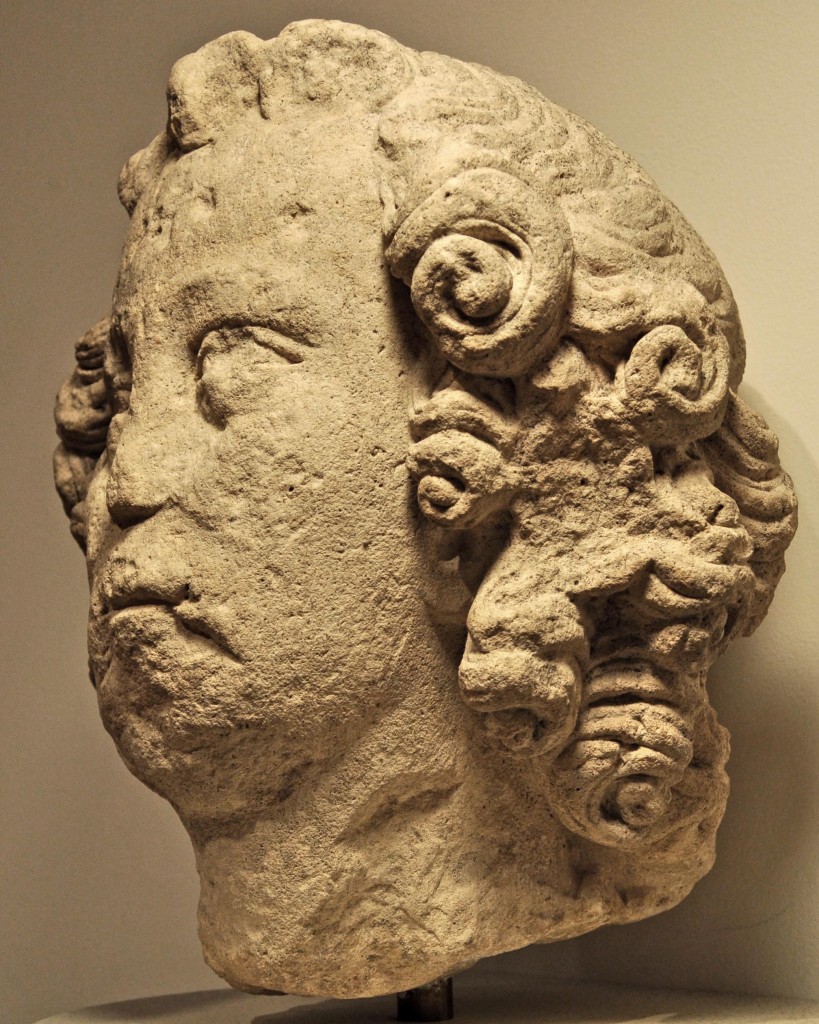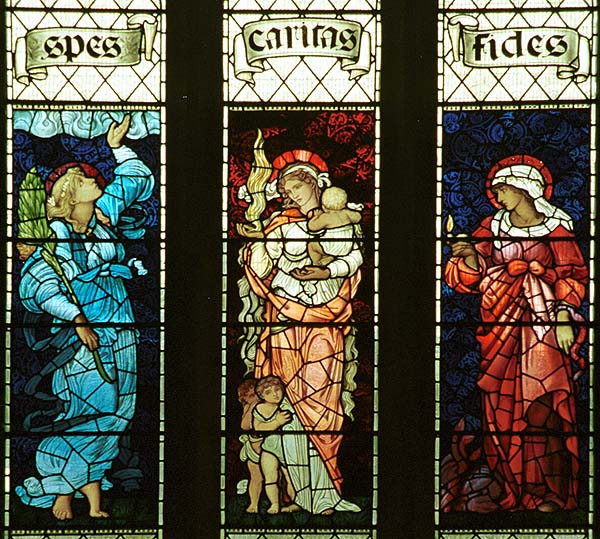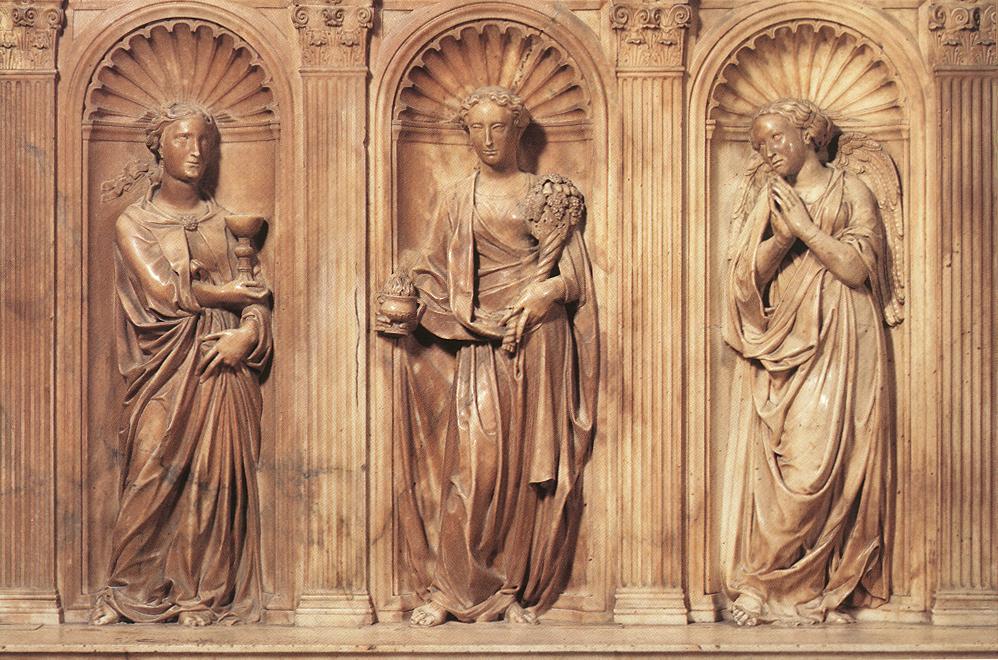Faith, Hope, and Charity are the three Christian virtues. In order to determine which virtue a work of art represents, scholars study features such as posture, symbols, actions, accessories, and setting.
For example, the Virtue of Faith carries a cross and chalice, Hope holds a flaming brand or torch, and Charity gathers fruit and may have small children at her side. Since all that remains of our statue at the Nasher is the head, it is difficult to determine which virtue she represented.
Virtues also commonly wear a halo, crown, or diadem. The hair of the Nasher Virtue is styled with an indentation above the curls, and several holes are visible—evidence that a metal headpiece originally would have been attached.
- Head of a Virtue, 1245. Limestone, 13 x 12 ¼ x 9 ½ inches. The Nasher Museum of Art, Durham, NC. The Brummer Collection, 1966.179.1, photo by Jessica Pissini
- Right side rear of the Head of a Virtue
- Top view of the Head of a Virtue, photo by Jessica Pissini
- Hellenistic, Diadem, 300- 250 BCE. Gold, glass, and enamel, 51 cm. Louvre Museum, Paris. Bj 106
- Sir Edward Burne-Jones, Hope, Charity, and Faith, 1889. Stained glass. St. Martin’s Church, Brampton, Cumbria, United Kingdom
- Italian (Umbrian), Detail of Theological Virtue Charity, 1500. Tempera and gold on wood, 29 ⅛ x 18 inches. Metropolitan Museum of Art, New York. 1982.177.2
- Italian (Umbrian), Detail of Theological Virtue Faith, 1500. Tempera and gold on wood, 29 ⅛ x 18 inches. Metropolitan Museum of Art, New York. 1982.177.1
- Italian (Umbrian), Detail of Theological Virtue Hope, 1500. Tempera and gold on wood, 29 ⅛ x 18 inches. Metropolitan Museum of Art, New York. 1982.177.3
- Donatello and Michelozzo, Sculpture of Theological Virtues, 1425-1427. Tomb monument of Pope John XXIII. Battistero di San Giovani, Florence, Italy








